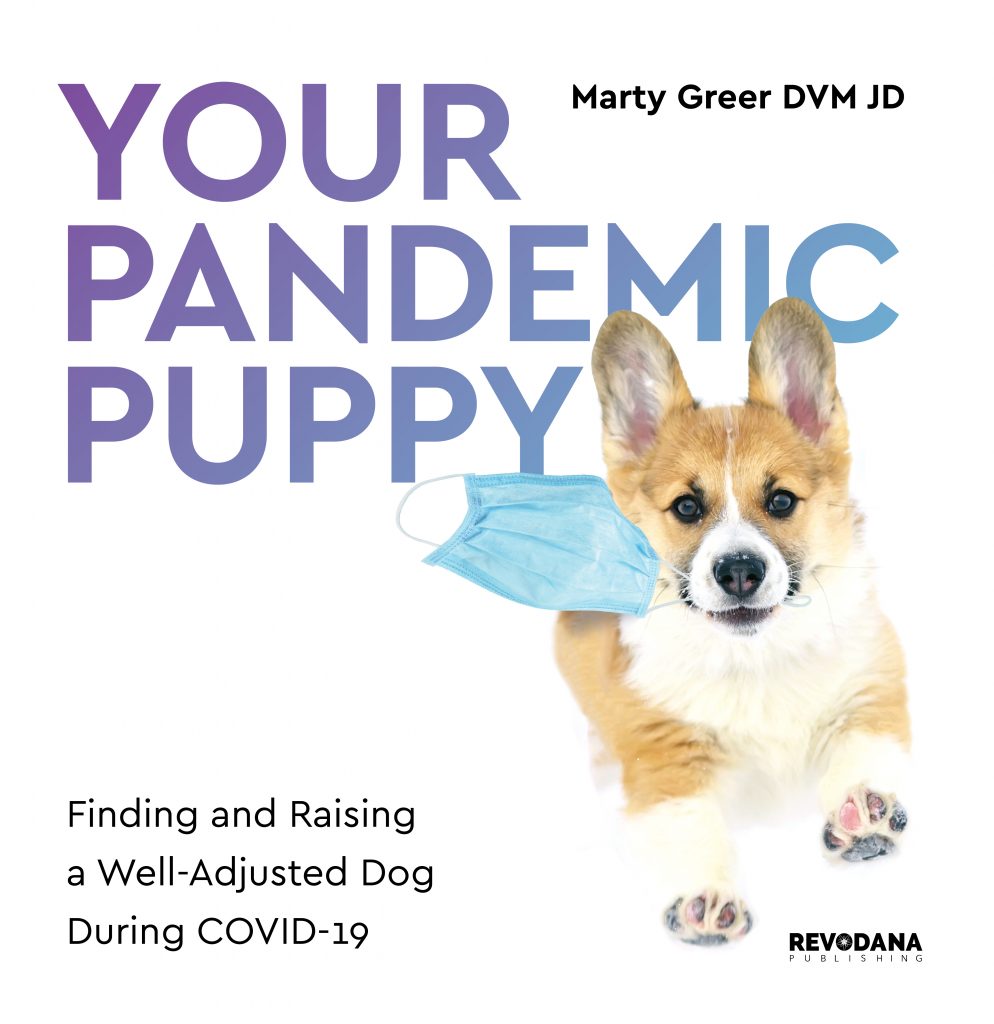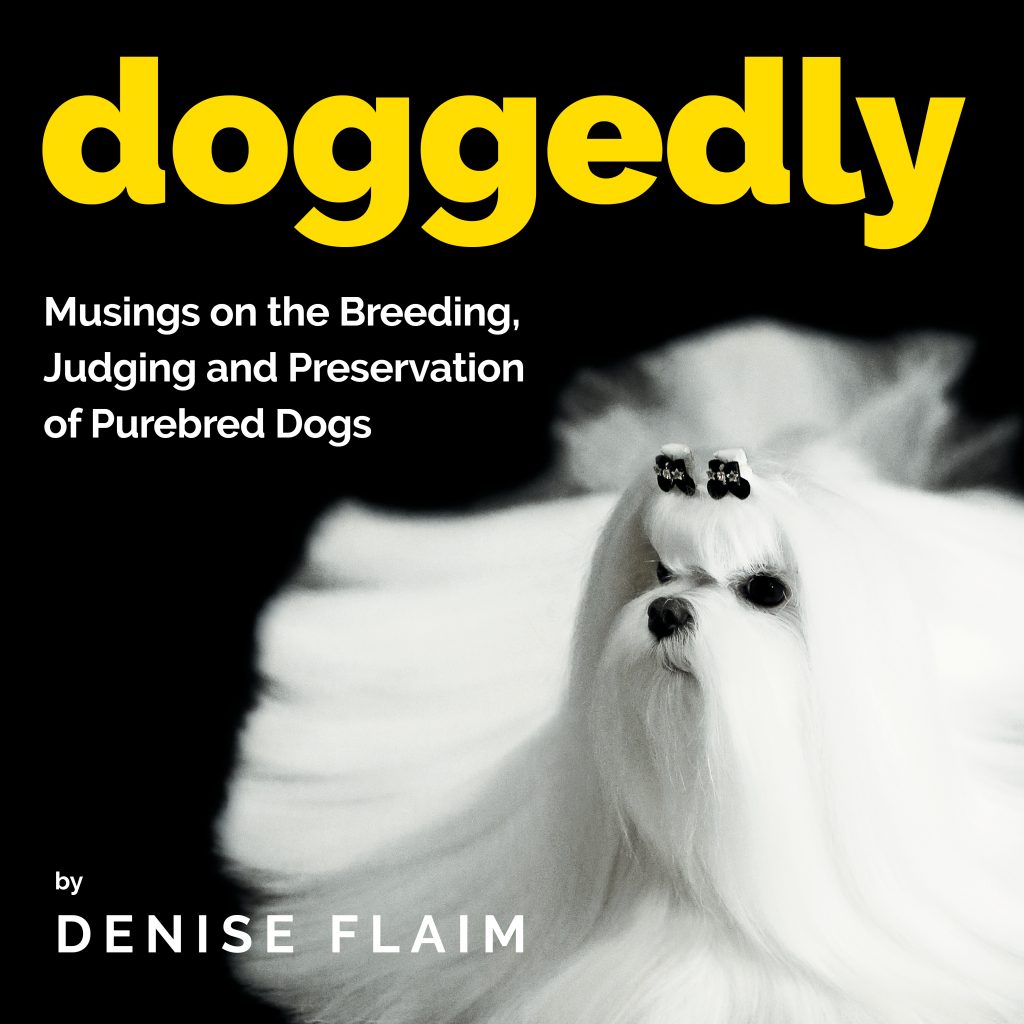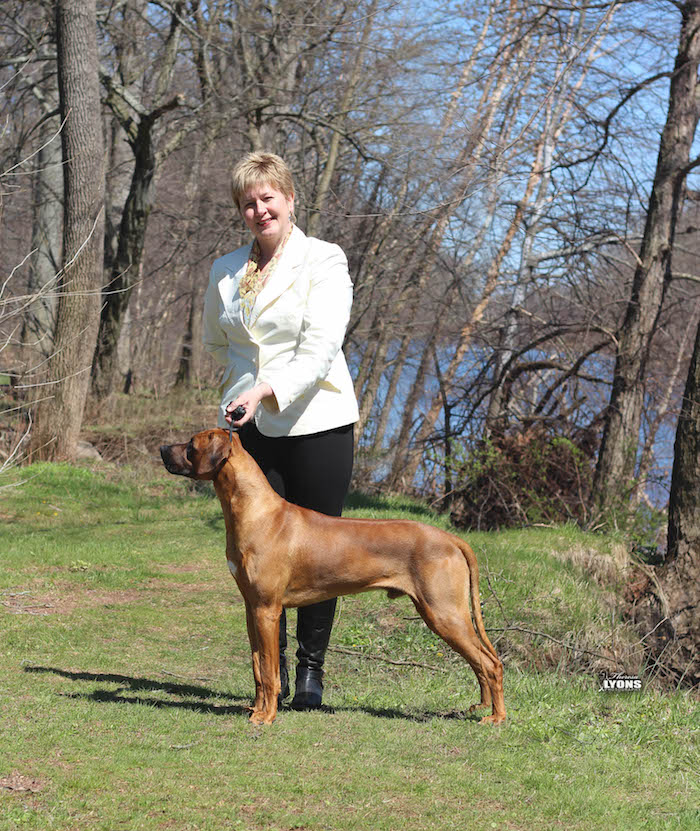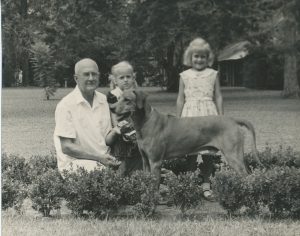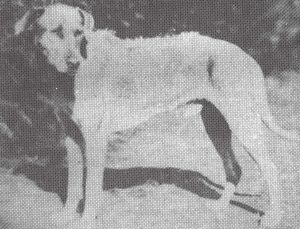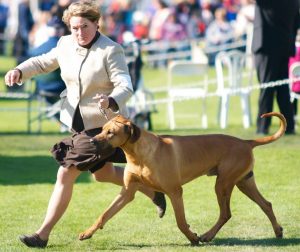451 – Pandemic Puppy: Inside Scoop on Marty Greer’s New Book
Pandemic Puppy: Inside Scoop on Marty Greer’s Timely New Book
Pure Dog Talk’s Veterinary Voice, Dr. Marty Greer, just released her newest book and joins host Laura Reeves to share the inside scoop, including how Laura knew about it from the beginning.
“At a time when we’re rethinking almost everything in our lives, Your Pandemic Puppy will recalibrate your concept of puppy rearing and dog ownership. Up to date, contemporaneous and thoughtful, Your Pandemic Puppy was written by a veterinarian with four decades of medical experience. In these pages, you’ll find information on all aspects of your new puppy’s physical and mental well-being, from the challenges of finding a new companion during the current COVID-19 crisis, through training and medical care.
“But more than just how-to advice, this book also explores what owning a puppy means to a family, and what to anticipate in the future, when you return to your former work and school schedule. This book is intended to help you have a great experience all along the way, from selecting your new puppy through adolescence. Having a new puppy or dog should be lots of fun: Here’s to making that your new normal.”
“Back in March or April my travel got curtailed,” Greer said “… and we were in our veterinary clinic only allowed to see sick patients, we weren’t allowed to do any routine spay-neuters or routine vaccinations… that significantly changed our flow of patient care …
“So I thought, well, you know, I’ve got a little time on my hands … I need to rewrite the puppy materials that we use in our exam rooms. So I’m gonna write a little 20 page doc to add a little booklet that we can use for our clients. It needs to be updated. Flea and tick medications are new and vaccine protocols have changed and spay and neuter information is different, so there’s been enough changes, I thought yeah it’s time to do this so I sat down and started writing it.
“And then one day I was talking to Laura and I said I have this really neat idea for a book that would be targeted at generations of dog owners because millennials own dogs differently and select dogs differently than boomers and boomers are different than Gen X are so I would like to write a book. And she said well let me get you in touch with Denise Flaim who can help you as a publisher. Well, I talk to Denise and she’s like no, no we’re going to do this as the pandemic puppy (and) it is now published.
“I’m super excited about it because it’s not only a book on how to select a dog, but how to raise a dog based on behavioral and veterinary up-to-date information. Also dealing with the COVID changes, it incorporates those as well. So it’s pretty comprehensive.
“It’s different selecting a dog right now because the rescues are wiped out. Nobody has any dogs. If the shelters had dogs, they put him into foster care. So the foster homes are full but the pets are not available at the shelter because they were trying to cut down on traffic … the Breeders cannot possibly keep up with the demand.
“Everybody that has been putting up the with their kids or their spouses. Maybe they’re a single person living by themselves … everybody has time now because their work schedules have changed. Their school schedules have changed. They’re working from home. Things are completely different. So getting a dog right now, puppy or adult dog, is really difficult because the demand has skyrocketed at a time that people weren’t prepared for that. Just finding dogs is more challenging and sourcing responsible breeders is more challenging.
“Selection is different and then socialization absolutely has changed. It’s a lot more difficult to get into a dog training class. Many of our states are restricting the number of people in a gathering, so dog training classes are out or limited. There are some options and (I) talk about those, but it’s different.
“Another concern that a lot of people who are heavily involved in the dog community are concerned about (is that) some people go back to work or school and their lifestyle changes; or their job disappears and they don’t have the income; or they get transferred across the country because now the jobs they had before isn’t happening, so they’ve got to relocate.
“We do talk about that in the book. It is a real concern because we don’t want these dogs ending up in mass numbers going into rescue, going back to shelters, or going back to breeders. So, yes, we’ve talked about that in the book as well. How you can arrange your lifestyle with someone coming into the home to help take care of dogs, if you start to go back to work and you need a middle of the day dog walker. Those are discussed in the book for some options for people to come up with for solutions. The last thing anyone in the dog community wants is for this beautiful generation of dogs to end up as a glut back in the shelters.”
From NAIA President Patti Strand:
“Your Pandemic Puppy would make a great gift or Christmas stocking stuffer for anyone planning to acquire a new puppy or dog. And while its insights and recommendations have special value for people working from home during the pandemic, this handbook would help anyone seeking guidance about how to select, raise, care for and build a life-long bond with a canine companion.”
Buy Your Pandemic Puppy here.
396 – “Doggedly” Pursuing Preservation of Purebred Dogs
“Doggedly” Pursuing Preservation of Purebred Dogs

Author, Editor, Breeder, Judge Denise Flaim.
Host Laura Reeves and Denise Flaim, author of “Doggedly: Musings on the Breeding, Judging and Preservation of Purebred Dogs,” cover a lot of ground in their own musings on these topics.
What do respect, breed standards, judging, cooking, jazz music, period furniture and museums have in common? Listen in to this wide-ranging and challenging discussion for the answers.
“I think the way you learn a new breed is a three part process: head, heart, gut,” Flaim said. “First you see the breed. You know it exists. You start to study it. You read the standard. You go to seminars. It’s in your head.
“You have all those pieces, but there has to be something that you connect with with that breed. Maybe you met one and just sort of fell in love. Maybe it’s closely related to the breed you started with or breed that you really like. There’s got to be something that moves that breed from your head into your heart so that you genuinely like it.
“Then you’ve got that motivation to learn more about it. Slowly, as you get more exposure and you get more depth, and you talk to breeders and you talk about the stuff that the standard doesn’t say but that you as a judge need to know, it goes into your gut.
“That’s, I think, a big part of judging that people don’t talk about is instinct. Your gut feeling. It’s not just like some muse descends on you from out of nowhere that gut feeling comes from the drip drip drip of knowledge that you’ve gotten an exposure and then suddenly you don’t have to think.”
“Doggedly” reading
“It’s a real kind of buffet of ideas about dogs,” Flaim said. “A lot of times we talk about individual dogs and a lot of times we talk about very specific surface things but not as often as I would like do we talk about the ideas and the thoughts behind them.
“The thing I really am most proud about this book is, if you’re somebody who really is into dogs in more than a surface way, Pat Trotter said that she read it, she’s up all night. So I think of it as the book that keeps Pat Trotter awake at night.”
“Doggedly” is available at www.revodanapublishing.com. Use the code PUREDOGTALK for $5 off on any book.
Learn more:
223 — Rhodesian Ridgeback: Power and Elegance | Pure Dog Talk
294 – Veterinary Voice: Brachycephalic Breeds’ Health and Legislation | Pure Dog Talk
223 — Rhodesian Ridgeback: Power and Elegance
Balancing act of the Rhodesian Ridgeback
Denise Flaim, Rhodesian Ridgeback breeder, judge and historian, shares her knowledge as the RRCUS 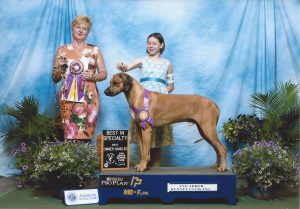 National Specialty kicks off in Colorado.
National Specialty kicks off in Colorado.
The first impression of a Rhodesian Ridgeback, Flaim said, is a “smooth dog with an unbroken fluid line from the top of the head, lovely crested neck, smooth withers, straight topline, gently sloped croup, slightly longer than tall, handy sized for trotting all day. Well angled. Not an empty front, moves freely and effortlessly. Lovely head, round dark eye, triangular ear.”
The Ridgeback, Flaim noted, is that perfect balance of speed and strength. The original dogs routinely coursed large African antelope. As with other sighthounds, the size and bone of the breed always parallels the prey it hunts. They need to be heavy enough to bring down large game like a 200-pound Nyala; lithe and fast enough to catch it. While the breed features a diversity of style within type, the ideal is a dog lacking exaggeration in any part.
“If you don’t know (a breed’s) history you’re doomed,” Flaim said “because you can’t understand its function and morphology.”
Ch. Swahili Jeff Davis — first American champion — with owner and founding Ridgeback breeder Col. Morrie de Pass of Mississippi.
Ridgebacks in Africa
In brief, according to Flaim, when the Dutch went to southern Africa in the late 1600s, they found an unimproved “border collie looking” dog that had a dorsal rise of hair on its back, Flaim summarized. These indigenous dogs that hung out with Koi Koi people, interbred with the Continental dogs, resulting in dogs that had native knowledge, resistance to tse tse flies and more.
The Boers moved to Rhodesia in the late 1800s, and a popular big game hunter acquired ridged bitches and interbred them with his pack. The resulting dogs were excellent at lion hunting.
Flaim was quick to clarify what that actually entailed. The dogs would be taken with rich European hunting parties, in small packs of two or three, to find a lion and harass it, like a matador. Overall athleticism that let the dogs get out of the way of claws was most important.
“Any Ridgeback foolhardy enough to make contact with a lion, soon exited the gene pool in an unceremonious fashion,” Flaim said.
What travels with the ridge?
The breed’s trademark ridge is important, Flaim observed, because “nothing exists in nature if it’s not functional. In Ridgebacks, the dogs that carried the ridge were superlative hunters and could survive in the harsh climate of southern Africa.
“Who knows what native knowledge or traits travel with that ridge,” Flaim said. “For example, Ridgebacks don’t jump into standing pools of water. They want graded entrances. In Africa, if you jump into a standing pool of water you encounter something that wants a snack.”
Rhodesian Ridgeback parent club website: https://www.rrcus.org/
And Allison Foley, Leading Edge Dog Show Academy, tells us how to use cornstarch for dematting.

